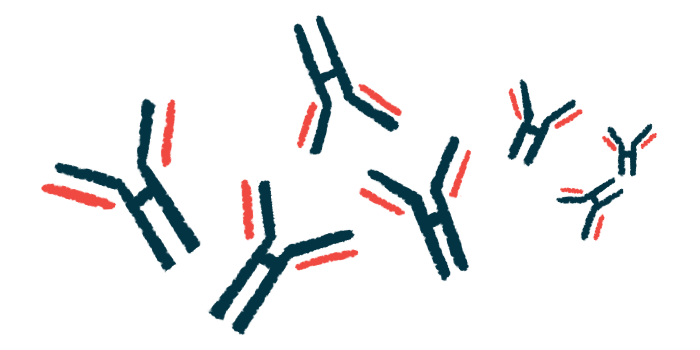Double-reactive autoantibodies linked to worse SLE disease activity
Anti-DNA antibodies may cause more harm than others, new study finds

A type of anti-DNA autoantibodies that also block an enzyme called DNase1L3 may cause more harm to people with systemic lupus erythematosus (SLE) than those that only bind to genetic material, a study has found.
These results, the researchers say, shed new light on the origin of SLE, the most common and the most serious form of lupus.
“Our findings provide a simple explanation for the differences of anti-DNA antibodies in SLE by demonstrating that some of these autoantibodies have multiple functions,” Felipe Andrade, MD, PhD, the study’s senior author, from the Johns Hopkins University School of Medicine, said in a university press release.
“We hope these findings will improve ways of identifying patients with severe lupus and also help doctors choose appropriate treatments,” said Andrade, an associate professor of medicine in the division of rheumatology, adding, “This research may help uncover underlying mechanisms of lupus and why it affects patients differently.”
The study, “Affinity maturation generates pathogenic antibodies with dual reactivity to DNase1L3 and dsDNA in systemic lupus erythematosus,” was published in the journal Nature Communications.
Anti-DNA autoantibodies were not the researchers’ focus
SLE is an autoimmune disease in which self-reactive autoantibodies mistakenly attack healthy cells and substances formed by a person’s own body. This can cause inflammation and damage in various parts of the body, such as the skin and the joints, the lungs and the heart, or the kidneys.
One type of autoantibodies often found in people with SLE are anti-DNA autoantibodies. However, not all anti-DNA autoantibodies cause the disease — though why that’s the case had been unclear.
Andrade’s team initially had their focus on another type of autoantibodies. These autoantibodies block DNase1L3, an enzyme that normally breaks down DNA from dead cells. When the activity of this enzyme is blocked, DNA builds up and causes inflammation.
While studying these autoantibodies, the researchers came across a subset that also bound to double-stranded DNA (dsDNA), a type of genetic material. Until now, this subset was thought to bind only to dsDNA.
To learn more about anti-DNase1L3 autoantibodies, the team collected blood from 220 people. A total of 158 of these individuals were SLE patients who were part of the Hopkins Lupus Cohort SPARE study. The other 62 were healthy people who served as controls.
The team found that a greater proportion of SLE patients tested positive for anti-DNase1L3 autoantibodies than did the healthy controls (30% vs. 1.6%).
Moreover, SLE patients who tested positive for anti-DNase1L3 autoantibodies had higher median SELENA-SLEDAI scores than those who tested negative (3.4 vs. 1.8 points). SELENA-SLEDAI is a tool used to assess disease activity in SLE patients, with higher scores indicating more active disease.
Anti-DNase1L3 autoantibodies identified from a batch of autoantibodies from SLE patients experiencing flares reduced the ability of the enzyme to breakdown DNA by up to 70%, according to researchers.
When they looked at the activity of genes related to inflammation, they found that it was turned up in most SLE patients (79%) who tested positive for anti-DNase1L3 autoantibodies.
Those findings “[support] the association of anti-DNase1L3 antibodies with higher disease activity in SLE,” the researchers wrote.
Genes related to interferon (IFN), a protein that’s made by immune cells in response to inflammation, were more active in SLE patients who tested positive for both anti-DNase1L3 and anti-dsDNA autoantibodies. However, this didn’t hold true for those who tested positive for only one of the two types of autoantibodies.
During the analysis of anti-DNase1L3 autoantibodies, “we were surprised that three of these antibodies were initially described as reactive to dsDNA and cardiolipin [a type of fat],” the researchers wrote.
We hope these findings will improve ways of identifying patients with severe lupus and also help doctors choose appropriate treatments.
Further analysis revealed that a subset of anti-dsDNA autoantibodies may actually arise from anti-DNase1L3 autoantibodies that might have gained the ability to also bind to dsDNA and cardiolipin as a result of mutations.
“This research may be the closest we’ve come to uncovering the root cause of anti-DNA antibodies,” said Eduardo Gómez-Bañuelos, MD, PhD, the study’s first author and an instructor at the Johns Hopkins University School of Medicine.
Overall, these results may help scientists better understand how SLE develops and why it may look different for different patients, according to the researchers.
The “findings have implications for biomarker testing in lupus and may help identify patients that need early and aggressive treatment,” the press release stated.







